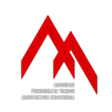Preferensi Masyarakat tentang Lingkungan Perumahan yang Ingin Ditinggali
DOI:
https://doi.org/10.21776/ub.ruas.2018.016.01.3Keywords:
Content analysis, residential environment, community preferencesAbstract
Housing development needs to be supported by particular guidelines issued by authorized institute for the achievement of development feasibility. Community participation as the main actors and users also took an important part for housing development to fit the target. Community disappointment is often caused by results that do not match the desires or not according to standards. The aim of this study was to find the preferences of the community related to the housing environment to be occupied, so it can open the new possibility in planning and designing the housing environment. This research uses exploratory qualitative and grounded theory method. Data collection is done through an open-ended online questionnaire and shared freely (non-random sampling). The collected data was analyzed qualitatively using the content analysis methods. The result showed that the five aspects that become the preference of residential environment (5 PRE) namely: environmental comfort, environmental facilities, environmental infrastructure, location and accessibility, building and residential environment design.
References
Aini, Nurul. 2015. Respon Masyarakat terhadap Konsep Perumahan Berbasis Agama: Perumahan Islami. Prosiding Temu Ilmiah IPLBI, C077-C084.
Anindyajati, Dyah, J., et al. 2014. Preferensi Keluarga Muda Dalam Memilih Rumah Tinggal di Surabaya Berdasarkan Atribut Fisik dan Infrastruktur Perumahan. Prosiding Seminar Nasional Manajemen Teknologi XX ITS, Surabaya, B18-1 s.d B18-8.
Budiasih, I Gusti, A, N. 2014. Metode Grounded Theory Dalam Riset Kualitatif. Jurnal Ilmiah Akuntansi dan Bisnis. 9 (1), 19-27.
Budihardjo, Eko. 1994. Percikan Masalah Arsitektur Perumahan, Perkotaan. Yogyakarta: Gadjah Mada University Press.
Catanese, Anthony, J & Snyder, James, C. 1992. Perencanaan Kota. Jakarta: Erlangga.
Collado, Silvia., et al. 2017. Restorative Environments and Health. In Bahi, Ghozlane, F., et al (Ed.), Handbook of Environmental Psychology and Quality of Life Research (127-148). Switserland: Springer.
Creswell, John, W. 2007. Qualitative Inquiry and Research Design: Choosing Among Five Approaches. California: Sage Publications, Inc.
Creswell, John, W. 2008. Research Design: Qualitative, Quantitative, and Mixed Methods Approaches. California: Sage Publications, Inc.
Doxiadis, Constantinos, A. 1970. Ekistics, the Science of uman Settlements. Form Science. 170 (3956), 393-404.
Kaplan, Rachel. 2001. The Nature of The View From Home: Psychological Benefits. Environment and Behavior. 33, 507-542.
Kaplan, Stephen. 1995. The Restorative Benefits of Nature: Toward an Integrative Framework. Journal of Environmental Psychology. 15, 169-182.
Kumar, Ranjit. 2005. Research Metodology, A Step by Step Guide for Beginner. London: Sage Publications.
Laurens, Joyce, M. 2005. Arsitektur dan Perilaku Manusia. Jakarta: PT. Grasindo.
Maslow, Abraham, H. 1994. Motivasi dan Kepribadian 1: Teori Motivasi dengan Pendekatan Hirarki Kebutuhan Manusia. Jakarta: PT. Pustaka Binaman Pressindo.
M, Sastra, S & Marlina, Endy. 2006. Perencanaan dan Pengembangan Perumahan. Yogyakarta: ANDI Yogyakarta.
Nadiya, Elzsa. 2017. Studi Preferensi Generasi Y Dalam Memilih Hunian di Jakarta Barat. Jurnal Muara Ilmu Ekonomi dan Bisnis. 1 (1), 145-152.
Peraturan Menteri Dalam Negeri Nomor 9 Tahun 2009 Tentang Pedoman Penyerahan Prasarana, Sarana dan Utilitas Perumahan dan Permukiman Di Daerah.
Rahman, Azman, A., et al. 2015. Residents Preference on Conservation of The Malay Traditional Village in Kampong Morten, Malacca. Procedia Social and Behavioral Sciences. 202, 417-423.
Santoso, Eddy, I. 2012. Kenyamanan Termal Indoor Pada Bangunan di Daerah Beriklim Tropis Lembab. Indonesia Green Technology Journal. 1 (1), 13-19.
Santoso, Imam & Riviwanto, Muchsin. 2011. Konsep dan Pendekatan Rumah. In Kasjono, Heru, S (Ed.), Penyehatan Pemukiman (1-20). Yogyakarta: Gosyen Publishing.
Sueca, Ngakan, P., et al 2001. Faktor-faktor Determinan Pengetahuan dan Persepsi Masyarakat Tentang Bangunan Berlanggam Bali. Dimensi Teknik Arsitektur. 29 (2), 157-164.
Tambunan, Damelina, B. 2009. Atribut yang Menjadi Pertimbangan Konsumen dalam Membeli Produk Perumahan. Jurnal Manajemen Bisnis. 2 (2), 141-153.
Tamboeo, Gunawan., et al. 2016. Dampak Sosial dari Pola Perumahan Permata Asri Pineleng. Jurnal Spasial. 3 (1), 36-45.
Tower, Graham. 2005. An Introduction To Urban Housing Design: At Home In The City. Oxford: Architectural Press of Elsevier.
V. Dokmeci, L., et al. 1996. Residential Preferences in Istanbul. Habitat INTL. 20 (2), 241-251.
Waluyo, A. (n.d.). Sumur resapan yang terintegrasi dengan saluran drainase. Retrieved from http://www.academia.edu/9591388/Sumur_Resapan_yang_Terintegrasi_dengan_Saluran_Drainase
Winanto, Agus., et al. 2016. Analisis Preferensi Atribut Terhadap Keputusan Konsumen Membeli Rumah di Kota Palembang. Jurnal Aplikasi Manajemen (JAM). 14 (1), 46-47.
Zinas, Bako, Z & Mahmud Bin Mohd Jusan. 2012. Housing Choice and Preference: Theory and Measurement. Procedia Social and Behavioral Sciences. 49, 282-292.
Downloads
Published
How to Cite
Issue
Section
License
Authors who publish with this journal agree to the following terms:
- Authors retain copyright and grant the journal right of first publication with the work simultaneously licensed under a Creative Commons Attribution License that allows others to share the work with an acknowledgement of the work's authorship and initial publication in this journal.
- Authors are able to enter into separate, additional contractual arrangements for the non-exclusive distribution of the journal's published version of the work (e.g., post it to an institutional repository or publish it in a book), with an acknowledgement of its initial publication in this journal.
- Authors are permitted and encouraged to post their work online (e.g., in institutional repositories or on their website) prior to and during the submission process, as it can lead to productive exchanges, as well as earlier and greater citation of published work (See The Effect of Open Access).












